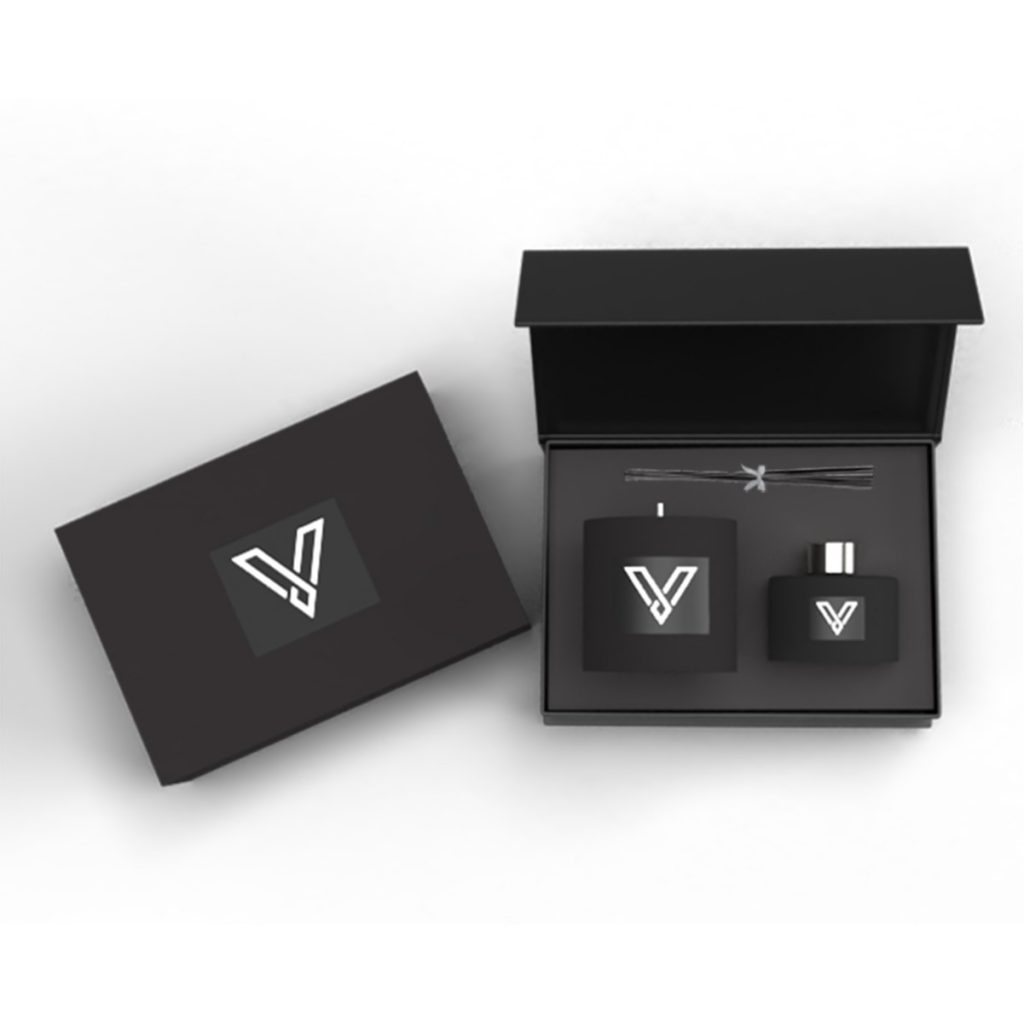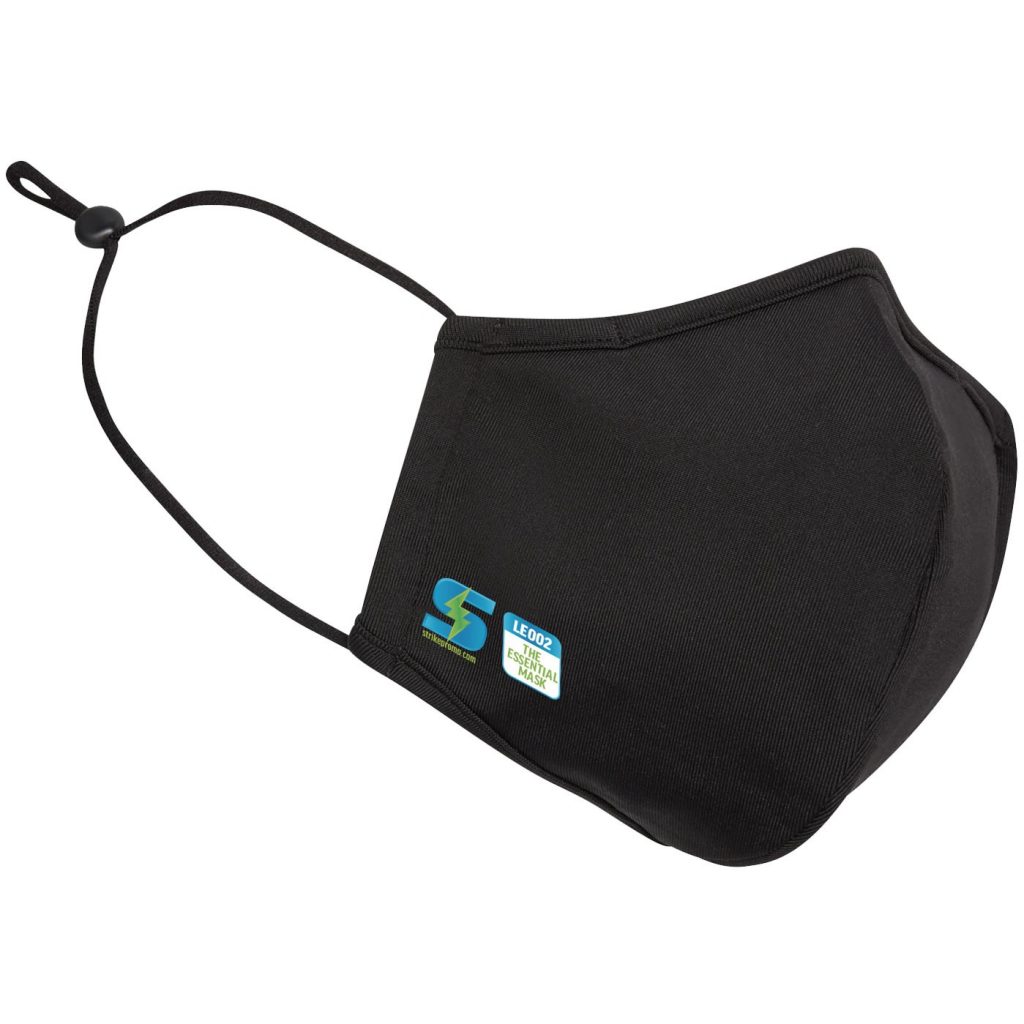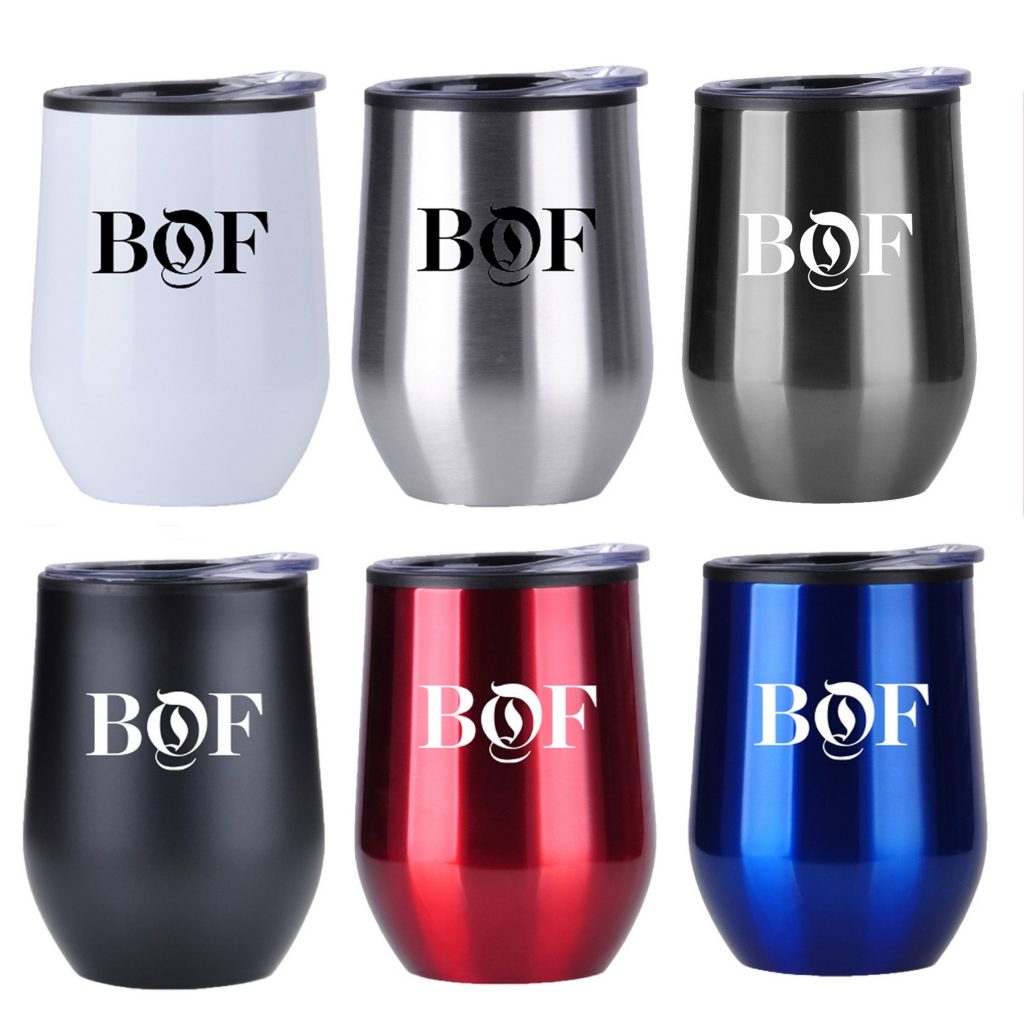Take a good look around your office. Do you see anything that shows off the brand of a local company? If so, you’re looking at promotional products at work.
Promotional products (sometimes called branded swag) bear your company name and/or logo. Popular examples include mugs, T-shirts, pens, hats, and mouse pads, but can also include less common items such as picnic blankets, ice packs, and touchscreen cleaning cloths.
In a world gone digital, it’s easy for marketers to overlook the value of a tangible branded product. But keep in mind, despite our reliance on digital channels, we still live and work in the physical world. Using physical goods to reinforce your brand is a highly effective way to get in front of the right people and continue to make brand impressions for as long as they have your product.
8 in 10 people love receiving promotional items, while 7 in 10 wish they received them more often. And if you need any more convincing, more than 9 in 10 people that receive promo items
will remember the company that gave it to them!
Those are some pretty powerful testimonies that promotional products work. But what purpose do they serve in a branding strategy?
Let’s look at five top reasons why you should use promotional products as part of every branding campaign:
1. Promotional Products Have a Long Shelf Life
The average person sees anywhere from
4,000 to 10,000 ads in a single day. That’s a lot of brand impressions for one person, and more than 99% of them are instantly forgotten. As a society, we’ve become highly skilled in putting on blinders to tune out some of the marketing noise. Companies that want to cut through those blinders may find it easy to do so with branded merchandise.
One report found that more than half of consumers keep a promotional item for one to four years. In addition, more than half of all adults use a promotional item every week! Every time they pick up your branded product, they’re getting another impression of your brand.
Compare this to a Google ad or Facebook post, for example. You might not pay much for that impression, but that impression is lost nearly instantly. They don’t have staying power like a tangible item that someone will use on a weekly basis.
Branded items also have a longer shelf life than business cards. According to one report, about
27 million business cards are printed every day. And of the 10 billion business cards printed each year, about 8 billion are tossed in the trash within a week. That's often because business cards are handed out "at the moment." If a person does not need the service at that time, they're more inclined to get rid of the business card.
Now, consider that a branded item is very much like a
business card but with an added purpose. There's more value in a branded item that also serves a useful function. People are more likely to hang onto that item not just for your brand but also for the product itself. Your brand being part of that product is an added bonus because when that person is ready for what you provide, your name will be top of mind.
More than 85% of people who have branded items do business with those companies. And when they no longer need the item (or didn't need it in the first place), most people tend to pass it along to someone else. This is excellent news for the company because it means your brand ends up in more hands!
There’s no doubt that promotional items have a much longer shelf life than things like digital ads, billboards, mailers, and other traditional forms of branded media. If your goal is to raise brand awareness, you will not find a greater value with any other channel or tactic.

2. Promotional Products are a Cost-Effective Way to Spread Brand Awareness
If you’re looking at branding techniques from a cost analysis perspective, promotional items beat just about anything else dollar for dollar. That’s because not only is the cost per item usually less than a few dollars per person, but promotional items also have staying power.
Let's make a quick comparison:
The average
Google Ad cost is roughly $2.80 per thousand impressions. The average conversion rate for Google Ads is about 4.40% on the search network and just 0.57% on the display network. Now, imagine that you showed that ad to the same person every day for four years (the average shelf life of a branded promotional item).
Here’s our calculation:
365 days x 4 years = 1,460 impressions
With each impression costing roughly $0.0028, you’d be spending about $4.09 to stay top of mind for just one customer over the course of four years.
Compare this to the cost of the average promotional item, which is
about $1 on average. That same $1 can work for you over and over again with no further investment required. Compared to a Google ad on the display network, promotional items cost about four times less.
Let’s add another layer to this: the tangibility factor. When you’re using
digital ads to turn heads, chances are your ad isn’t the only thing on the screen competing for attention. In digital marketing, an impression doesn't necessarily mean the person has seen your ad; instead, it simply means that your ad has been shown on the screen. That means that even though you've paid for an impression, your customer may not have seen your ad.
This isn’t the case when dealing with a physical product. Every time the product is used, the person using it gets a clear image of your brand. What's more, they have a physical connection to your brand. It engages more than one of the senses, making your brand more memorable and making your branding efforts all the more successful.
3. Promotional Products Can Remind Customers What You Do
Many companies choose their
promotional items based on the product or service their business offers. This can be a great way to drive awareness of your brand and why you exist in the first place.
For example, a wellness facility might use first aid kits or hot/cold packs as part of its branding strategy. If you're a travel agent, then a duffel bag or travel mug with your name and logo on it would make perfect sense. An outdoor retail store might give away branded golf balls, blankets, or small bottles of bug spray or sunscreen.
Illustrating these connections to your brand is especially important for companies whose names don’t give away what they do. In our case, AlphaGraphics is a pretty straightforward name. Our name doesn’t tell a person
everything we can do for them, but the “graphics” part tells people that we’re most likely a design firm dealing in visual art.
Now, what about a business name like Life in Luxury? Could this be a high-end clothing boutique? Or maybe a company offering etiquette classes? Perhaps they specialize in home furnishings, fine fabrics, jewelry, or expensive cakes? There are many possibilities, and simply adding the name to a promotional item might not be enough for people to connect that name with the products or services they offer.
But when you can choose a branded item that aligns with what you offer, that connection becomes more apparent. For example, if Life in Luxury happens to be a clothing boutique, you might consider offering branded sewing kits or a microfiber cleaning cloth for glasses.
If you're unsure about the type of promotional item that would best suit your brand or business, talk to an AlphaGraphics sales rep to
explore your options.

4. Free Promotional Items Can Help Create Customers for Life
Customer loyalty is just as important to branding as your company name, logo, and colors. That's because branding isn't just a visual effort but rather a holistic representation of what your company is all about. Your customers are very much a part of this. You want them to be a part of your brand, share your brand with others, and become an advocate that will help you grow your business.
Building brand advocates has become of even greater importance in recent years. Digital advertising is rising much faster than inflation. Organic social reach has dipped, more and more people are using
ad blockers, and ad blindness is at an all-time high. Arguably, the best way to reach new customers is via your current ones.
An overwhelming 92% majority of people trust word-of-mouth recommendations from family or friends. More than 7 in 10 people also trust content shared by people they know rather than a brand. What’s more, every time someone shares your brand with someone else, it’s essentially free marketing for you.
Marketing is essentially a numbers game. Therefore, it stands to reason that the more loyal customer advocates you have, the more you can grow your business just through customer referrals and user-generated marketing.
Promotional items are a highly effective way to earn loyal customers. Many people see free promotional items from companies as a gift. They appreciate the gesture and use the item with pride.
They also tend to feel some sort of special satisfaction knowing that their gift isn’t something that everyone could receive. About
96% of consumers say they wish they knew ahead of time when a company was offering a promotional gift. This indicates they may be more inclined to take advantage of an offer to receive a free item or gift. It's a small gesture that can add up to significant revenue over time.
5. The Right Promotional Products Can Help You Attract Your Target Audience
Another big part of branding is the ability to connect with your ideal customer. For example, sports brands like Adidas or Under Armour have built their brands to attract fitness-minded individuals and athletes of all ages. Lifestyle brands like Gaiam or pRana appeal to individuals that want to restore balance in their lives and reconnect with nature and their inner selves.
Brands can use promotional items to support their targeting efforts, too. For example, if you want to wow a high-end client, you might look for branded gifts that cost a little more per item. Glass paperweights, a pen that comes in a gift box, or even a Yeti cooler can help to make a statement.
Or, let’s say you’re an insurance company and you want to attract more customers that own motorcycles. Your branded gift of choice might be a motorcycle-shaped magnet, keychain, or bottle opener, for example.
Choosing the best promotional products is all about alignment. When the product is useful, represents what your company does, and stands out to the type of customer you want to attract, a strong brand naturally follows.

Best Practices for Using Promotional Products for Branding
Now that you know the role of using promotional products in branding, exactly how do you go about it? We've got you covered with some of the best practices we've developed throughout many years of experience:
Choose Items with a Naturally Long Shelf Life
Promotional items tend to have a longer shelf life compared to an ad or billboard. But that’s not true with
every promotional item. For example, if you’re giving away candy that has your logo printed on the wrapper, that wrapper will end up in the trash in seconds. The same goes for any type of consumable item: lip balm, hand sanitizer, miniature notepads, and the like. Once it’s gone, so is your brand impression.
It’s a good idea to choose items that have a long shelf life. This serves two purposes:
First and foremost, it gives customers a reason to hold onto that item for longer. The longer they keep and use the item, the more brand impressions you receive.
And second, you don’t risk having that item go bad if you don’t hand them out all at once. Depending on the item, you may have to order several units upfront. This is fairly standard in the promotional products sector. But if you have to order more than you really need, you’re left sitting on unused inventory until another need arises.
Budget for All Related Costs
Promotional items usually come out of your marketing budget. As you decide how much you can afford to spend, make sure you consider all costs of promo product marketing. The price per item is just the start. In addition, you may have to pay a setup fee, as well as shipping costs and sales tax. In some cases, you might also have to pay extra fees like additional imprints, rush delivery, or special packaging.
These costs can add up quickly. Make sure you ask your promotional marketing partner about all fees involved to know what to expect.
Think Outside the Logo
When you’re using promotional items to drive brand awareness, adding your logo to the item seems like a given. But that's not always the case.
While you want people to associate your name and brand with the gift, you don't always have to include your logo to do so. Instead, you might have a unique slogan or tagline for a specific brand awareness campaign. Using your brand’s font and colors can also help to tie your brand into the design.
If you’re sending a gift to a loyal customer, they might prefer a gift that’s personalized to them instead of branded by your company. Or, you might choose to include both but make your logo less prominent. This can make your recipient more likely to use the item.
Offer Customers a Choice
If you want to increase your customers' chance to love, keep, and use the promo item, consider offering them a choice. When customers have control over their gifts, they're more likely to choose something they really like. This not only reduces waste on your end but also ensures your item will continue delivering value.
If you decide to offer a choice of promotional items, try to keep them within the same price point. Also, gauge whether people are consistently choosing a particular item over another so you can adjust your promo item branding strategy moving forward.
Get Professional Promotional Products for Your Business Today!
Ready to transform your branding strategy with promotional products?
Get in touch with the AlphaGraphics team today to explore the possibilities!